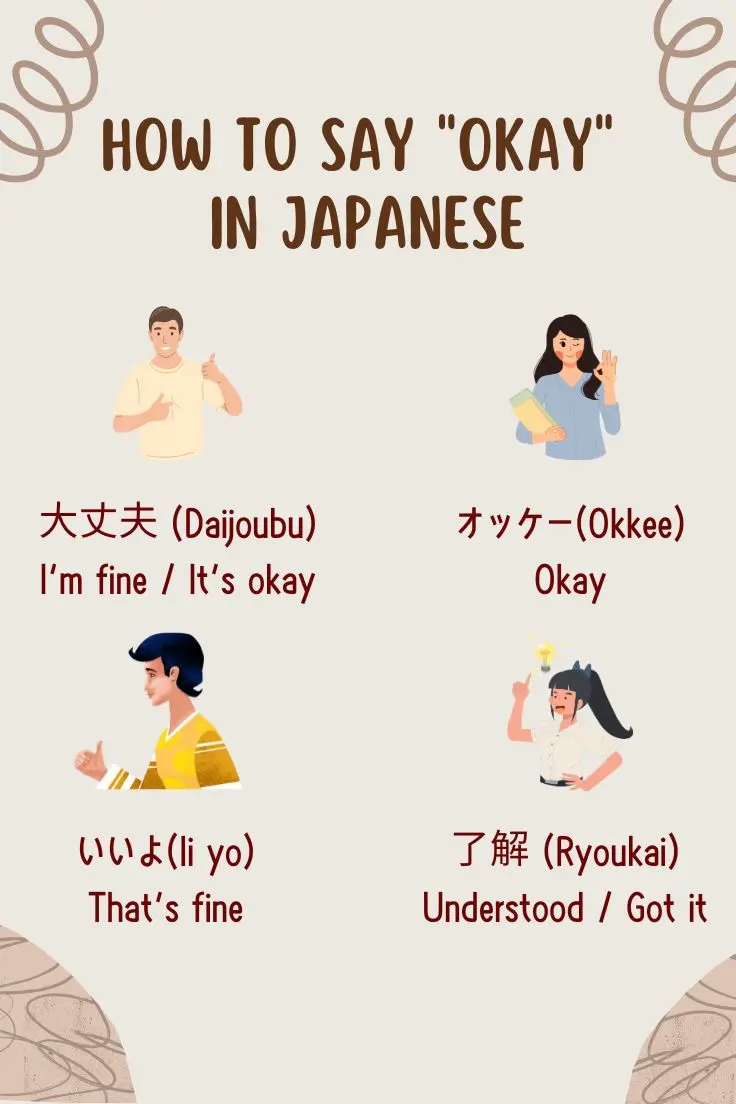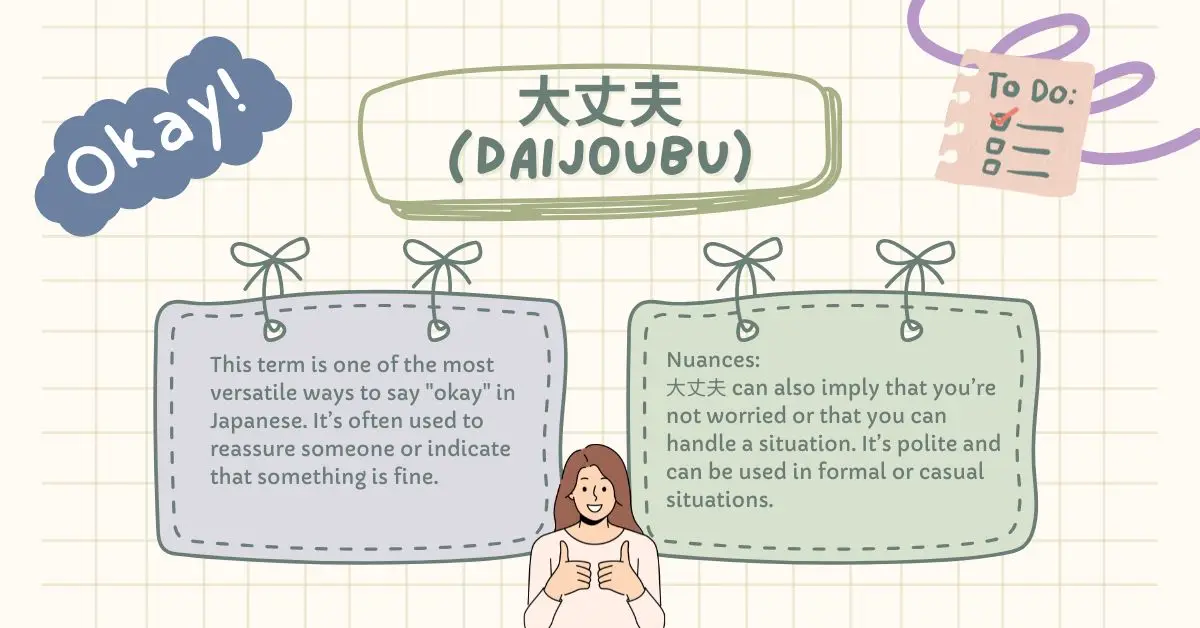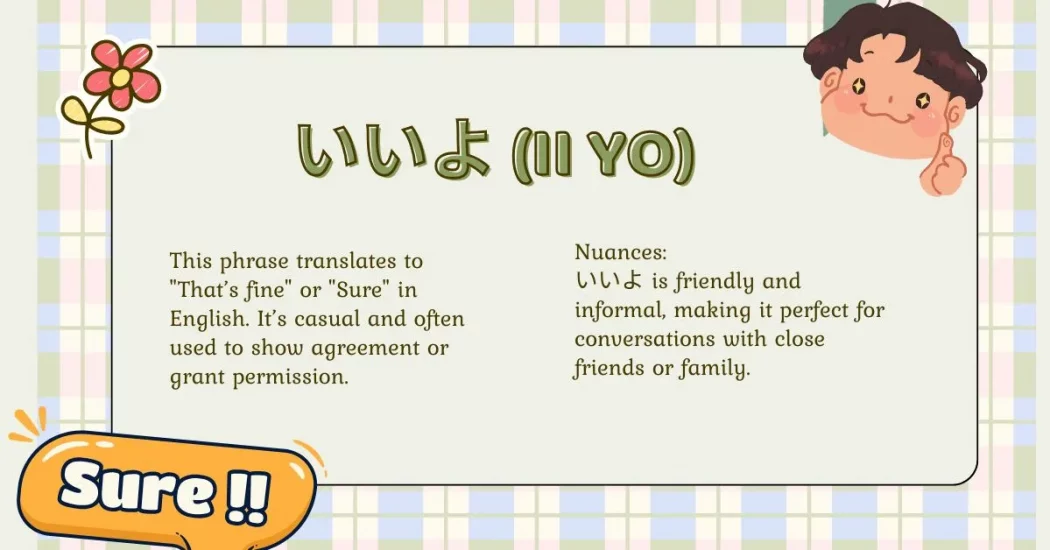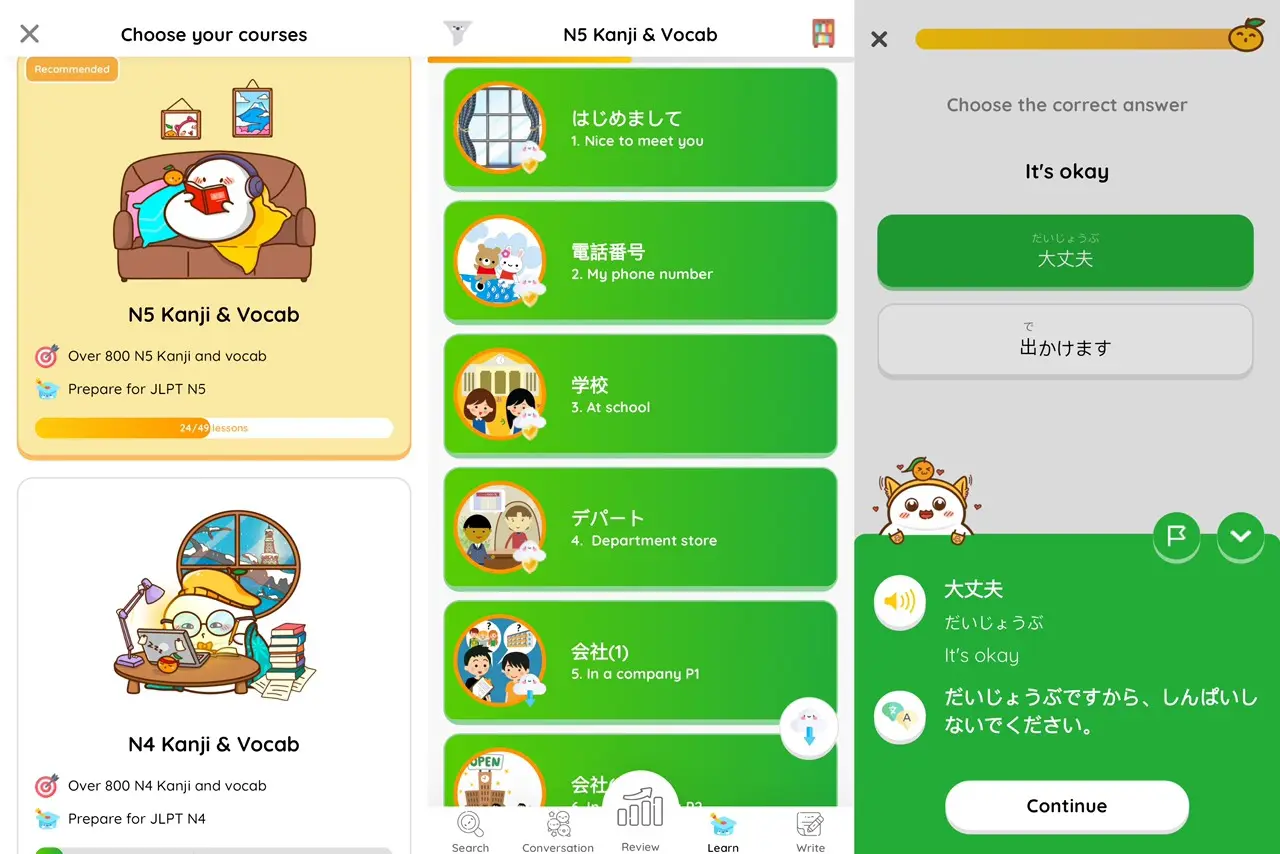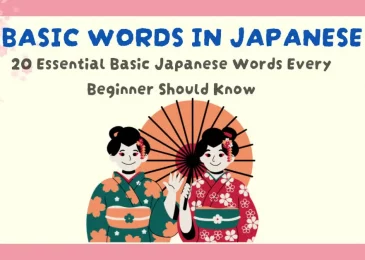Language is a window into culture, and Japanese is no exception. If you’re learning Japanese or simply curious about it, you might wonder, “How do you say ‘okay’ in Japanese?” The word “okay” is one of the most versatile and widely used terms in English, and its equivalents in Japanese are just as essential. Whether you’re confirming, agreeing, or showing understanding, knowing how to say “okay” in Japanese can make your conversations flow more naturally.
In this guide, we’ll explore the different ways to express “okay” in Japanese, the nuances behind each term, and how to use them effectively.
- How to Say “Okay” in Japanese
- Common Expressions for “Okay”
- How Context Shapes Meaning
- Related Phrases and Expressions
- Cultural Insights on Saying “Okay”
- How to Practice Saying “Okay” in Japanese
- Conclusion
1. How to Say “Okay” in Japanese
The most common and straightforward translation of “okay” in Japanese is 大丈夫(daijoubu). However, there are other variations depending on the context, formality, and tone of the conversation.
Here’s a quick overview of the most common expressions:
- 大丈夫 (Daijoubu): Often used to say “I’m fine,” “It’s okay,” or “Don’t worry.”
- オッケー(Okkee): A casual, borrowed term directly from English.
- いいよ(Ii yo): Translates to “That’s fine” or “It’s okay,” often used in informal settings.
- 了解 (Ryoukai): Meaning “Understood” or “Got it,” commonly used in professional or formal situations.
Each of these terms has its own specific use, and understanding the subtle differences will help you sound more natural in Japanese.
2. Common Expressions for “Okay”
大丈夫 (Daijoubu)
This term is one of the most versatile ways to say “okay” in Japanese. It’s often used to reassure someone or indicate that something is fine.
Examples of Usage:
When asked if you’re fine:
Q: 大丈夫ですか? (Daijoubu desu ka?) – Are you okay?
A: はい、大丈夫です (Hai, daijoubu desu) – Yes, I’m okay.
When declining help:
ありがとう、大丈夫です (Arigatou, daijoubu desu) – Thanks, but I’m okay.
Nuances:
大丈夫 can also imply that you’re not worried or that you can handle a situation. It’s polite and can be used in formal or casual situations.
オッケー(Okkee)
Borrowed from English, オッケー is a casual and trendy way to say “okay” in Japanese. It’s widely understood, especially among younger generations, and can add a relaxed vibe to your speech.
Examples of Usage:
Agreeing to a plan:
明日、映画に行く? (Ashita, eiga ni iku?) — Want to go to the movies tomorrow?
オッケー! (Okkee!) — Okay!
Confirming instructions:
このボタンを押してね (Kono botan wo oshite ne) — Press this button, okay?
オッケー! (Okkee!) — Got it!
Nuances:
It’s informal and best used among friends or peers.
いいよ (Ii yo)
This phrase translates to “That’s fine” or “Sure” in English. It’s casual and often used to show agreement or grant permission.
Examples of Usage:
Giving permission:
これ使っていい? (Kore tsukatte ii?) – Can I use this?
いいよ (Ii yo) – Sure.
Reassuring someone:
気にしないで、いいよ (Ki ni shinaide, ii yo) – Don’t worry, it’s okay.
Nuances:
いいよ is friendly and informal, making it perfect for conversations with close friends or family.
了解 (Ryoukai)
For situations that require formality or professionalism, 了解 is the go-to term. It’s often used in workplaces, emails, or when confirming instructions.
- Examples of Usage:
- Acknowledging instructions:
資料を送ってください (Shiryou wo okutte kudasai) — Please send the documents.
了解です (Ryoukai desu) — Understood. - Responding to a request:
明日の会議に参加しますか? (Ashita no kaigi ni sanka shimasu ka?) — Will you join tomorrow’s meeting?
了解 (Ryoukai) — Got it.
- Acknowledging instructions:
- Nuances:
While formal, 了解 is less polite than its alternatives, such as 承知しました (Shouchi shimashita). It’s best suited for semi-formal or neutral professional settings.
3. How Context Shapes Meaning
Japanese is a context-sensitive language, meaning the way you say “okay” can change based on the situation. Here’s how to choose the right term:
- Casual Settings: Use オッケー or いいよ when chatting with friends or peers.
- Formal Settings: Opt for 大丈夫 or 了解 when speaking to colleagues, superiors, or strangers.
- Reassurance: Stick to 大丈夫 when comforting someone or politely declining help.
4. Related Phrases and Expressions
To deepen your understanding, here are other expressions closely related to “okay” in Japanese:
- 問題ない (Mondai nai): “No problem” or “It’s fine.”
- その通り(Sono toori): “Exactly” or “That’s right.”
- オールライト(Ooruraito): A rarely used term borrowed from “all right.”
- よし(Yoshi): “Alright!” or “Let’s do this!” — often used as self-motivation.
5. Cultural Insights on Saying “Okay”
In Japanese culture, politeness and context play a huge role in communication. Choosing the right phrase shows cultural awareness and respect. For example:
- Using オッケー in formal situations might seem too casual or unprofessional.
- Overusing 大丈夫 can make you appear dismissive.
When in doubt, err on the side of formality. It’s always better to sound polite than overly casual in unfamiliar settings.
6. How to Practice Saying “Okay” in Japanese
- Role-Playing: Practice common scenarios where you’d use these terms, such as ordering food, confirming plans, or responding to instructions.
- Listening Practice: Watch Japanese dramas or anime to hear how native speakers use these phrases naturally.
- Conversational Practice: Engage with native speakers through language exchange apps or online tutors.
With MochiKanji’s focused vocabulary lessons, which cover levels N5 to N2, you may improve your comprehension of Japanese. Key phrases like “okay” are easier to learn and keep because to the app’s interactive flashcards, which come with both audio and visuals. Take your Japanese skills to the next level by beginning your journey with MochiKanji now!
Conclusion
Mastering how to say “okay” in Japanese is more than just learning translations; it’s about understanding context, tone, and cultural nuances. Whether you’re saying 大丈夫 to reassure someone, using 了解 in a professional setting, or casually replying with オッケー, each expression brings you closer to natural and effective communication.
Start practicing these phrases in real-life scenarios, and you’ll soon feel more confident navigating conversations in Japanese. With consistent effort, expressing “okay” in Japanese will become second nature, making your language skills even more impressive!

